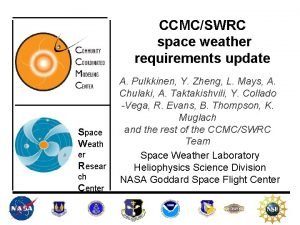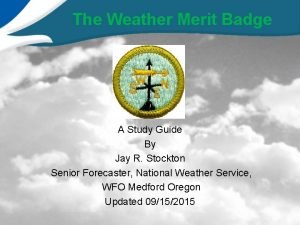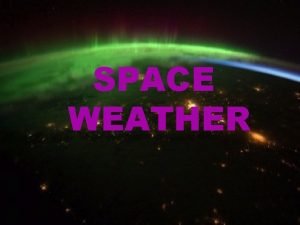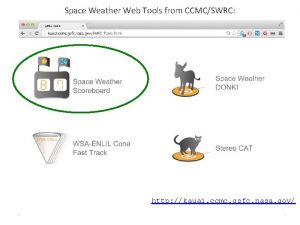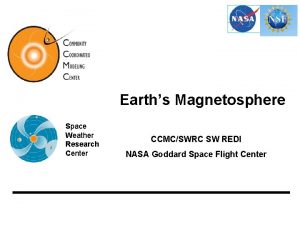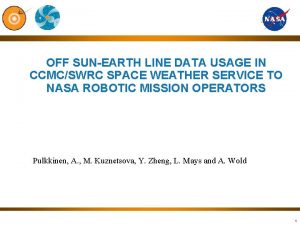CCMCSWRC space weather requirements update Space Weath er









- Slides: 9

CCMC/SWRC space weather requirements update Space Weath er Resear ch Center A. Pulkkinen, Y. Zheng, L. Mays, A. Chulaki, A. Taktakishvili, Y. Collado -Vega, R. Evans, B. Thompson, K. Muglach and the rest of the CCMC/SWRC Team Space Weather Laboratory Heliophysics Science Division NASA Goddard Space Flight Center

Requirements update o We generated the following document as a result of the Sep 2009 workshop: Space Weather Information System Requirements for NASA Robotic Missions – A Workshop Report. o We are now in the process of refining this document to better guide CCMC/SWRC ops activities. o While we will be inviting comments and feedback via online questionnaire and direct communications with individual missions, we outline some of the refinement ideas here – any feedback and ideas greatly appreciated!

Requirements update o Sep 2009 we identified the following space weather issues associated with robotic mission ops: I. III. IV. V. VII. Spacecraft surface charging caused by low-energy electrons. Spacecraft internal electrostatic discharge caused by highenergy electrons. Single event effects due to high-energy protons and heavier ions generated. Total dosage effects caused by cumulative charged particle radiation received by spacecraft. Increased spacecraft drag caused by thermal expansion of the Earth’s upper atmosphere during space weather storms. Communication disruptions between ground stations and spacecraft due to ionospheric irregularities. Attitude control disruptions caused.

Requirements update Based on user feedback we have emphasized o Sep 2009 we identified these the following space weather issues associated with robotic mission ops: I. III. IV. V. VII. Spacecraft surface charging caused by low-energy electrons. Spacecraft internal electrostatic discharge caused by highenergy electrons. Single event effects due to high-energy protons and heavier ions generated. Total dosage effects caused by cumulative charged particle radiation received by spacecraft. Increased spacecraft drag caused by thermal expansion of the Earth’s upper atmosphere during space weather storms. Communication disruptions between ground stations and spacecraft due to ionospheric irregularities. Attitude control disruptions caused.

Requirements update We are planning to better emphasize also drag issues inthe thefollowing future space weather o Sep 2009 we identified issues associated with robotic mission ops: I. III. IV. V. VII. Spacecraft surface charging caused by low-energy electrons. Spacecraft internal electrostatic discharge caused by highenergy electrons. Single event effects due to high-energy protons and heavier ions generated. Total dosage effects caused by cumulative charged particle radiation received by spacecraft. Increased spacecraft drag caused by thermal expansion of the Earth’s upper atmosphere during space weather storms. Communication disruptions between ground stations and spacecraft due to ionospheric irregularities. Attitude control disruptions caused.

Requirements update o Tailoring of our space weather information for the needs of individual missions one of the next big goals (IRAD lead by M. Maddox): o Tailored alerts. On which types of alerts we should focus first? o Tailored mission-specific products. On which types of products we should focus first? o Which (types of) missions we should focus first? o …

Requirements update o Moving toward capability to specify hardware impacts another next big goal (IRAD lead by Y. Zheng): o This will be a very close collaboration with GSFC REAG, JPL and MSFC impacts experts. Other groups? o We will start with SEP impacts in the interplanetary space. Other high priority types of impacts? o …

Requirements update o We will also increase our training activities via Space Weather REDI: o June 2013 space weather boot camp launched the activities. o What are the NASA robotic mission ops space weather training needs?

Requirements update o You will hear more from us soon via online questionnaire and direct communications with individual missions – your feedback and comments will help us to improve our services to you.
